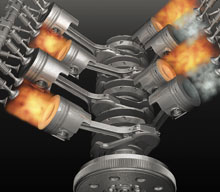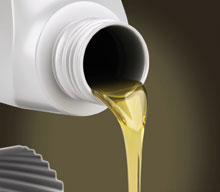Latest two stroke oil development for all 2-stroke applications
The differences between a 2-stroke and a 4-stroke engine are significant, and those differences demand different properties from the lubricant. Lubrication of the 2-stroke system requires a fluid that will form a tenacious film that will not be evaporated and will create a protective layer of oil over the entire piston surface. Unlike a 4-stroke engine, there is no oil submersion in a 2-stroke machine, so the film strength is one of the more important properties of a 2-stroke oil. It needs to withstand the heat and combustion of the fuel without burning and also needs to be able to clean the parts that may have carbon deposits or gummy residues left over from poor combustion or less effective lubricants. Since the thin film of lubricant is the only thing to stop the piston rings from grinding into the cylinder walls, these lubricants must be capable of protecting against high levels of pressure during the stroke of the piston.
Developing countries are also facing a serious pollution problem from two-stroke engines as they represent almost 80% of the traffic. Most of the time these 2-stroke engines are fitted into public transport vehicles that operate under extreme conditions resulting in excessive smoke in addition to many other drawbacks.
Prideco Holdings developed state of the art two-stroke oil with unique lubrication properties and unprecedented smoke reduction characteristics under the most extreme conditions. At a treatment ratio of 100:1 running between 15,000 – 20,000 rpm’s no sign of wear could be detected without any carbon build up and virtually no smoke.
All claims are substantiated by sound scientific and empirical data.
The product will be launched shortly through accredited dealers as specialists in the two stroke market supply chain in South Africa.























